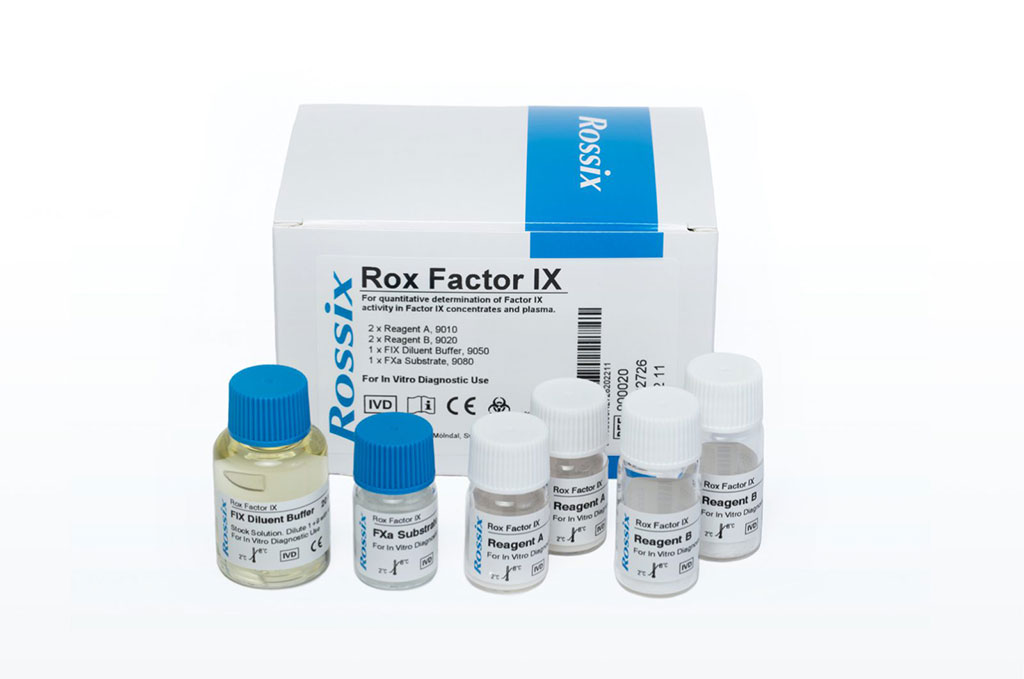Bleeding Phenotype Defined in Nonsevere Hemophiliacs
Posted on 15 Aug 2022
Persons with hemophilia have an increased bleeding tendency in which those with mild hemophilia mainly experience bleeding events provoked by trauma or surgery. In contrast, persons with severe hemophilia, especially when not treated on prophylaxis, experience frequent spontaneous bleeding events.
Hemophilia A and B are inherited bleeding disorders characterized by a deficiency of coagulation factor VIII (FVIII) and factor IX (IX), respectively. Disease severity is based on the residual coagulation FVIII/IX level and is classified as severe (<0.01 IU/mL), moderate (0.01-0.05 IU/mL), or mild ((>0.05-0.40 IU/mL). In persons with nonsevere hemophilia, there is a paucity of detailed information on the bleeding phenotype.

Pediatric Hematologists at the Emma Children’s Hospital (Amsterdam, The Netherlands) and their colleagues included in a multicenter cohort study, males with nonsevere hemophilia A and B (baseline FVIII/IX level, 0.02-0.35 IU/mL) aged 12 to 55 years. In total, 304 persons (70 with moderate hemophilia and 234 with mild hemophilia) were included. The median age was 38 years (interquartile range [IQR], 25-49 years), and the median baseline FVIII/IX level was 0.12 IU/mL (IQR, 0.05-0.21 IU/mL).
Information on age at first treated (joint) bleed, annual bleeding rates (ABRs), and annual joint bleeding rates (AJBRs) was collected from the medical files. The association between baseline FVIII/IX levels and the joint bleeding rate was assessed by using a frailty model for recurrent events. FVIII/IX activity levels were measured by using one-stage clotting assays with corresponding FVIII/IX Actin FS reagent using a Sysmex CS-2500 (Siemens Healthineers, Erlangen, Germany), and the FVIII/IX chromogenic assays were measured with reagents from Siemens and Rossix (Mölndal, Sweden), respectively.
The scientists reported that in total, 245 (81%) persons had experienced at least one bleed, and 156 (51%) had experienced at least one joint bleed. The median age at first bleed and first joint bleed was eight and 10 years, respectively. The median treated annual bleeding rates (ABR) and treated joint bleeds (AJBR) was 0.2 (IQR, 0.1-0.5) and 0.0 (IQR, 0.0-0.2). From baseline FVIII/IX levels 0.02 to 0.05 IU/mL to >0.25 IU/mL, the median ABR decreased from 0.6 (IQR, 0.2-1.4) to 0.1 (IQR, 0.0-0.2) and the AJBR from 0.2 (IQR, 0.0-0.4) to 0.0 (IQR, 0.0-0.0). Baseline FVIII/IX was inversely associated with the joint bleeding rate. Low bleeding rates were observed in persons with nonsevere hemophilia. However, one-half of all adolescents and adults had experienced a joint bleed.
The authors concluded that their study showed that despite low bleeding frequencies, more than one-half of the persons with nonsevere hemophilia had experienced a joint bleed since birth. The joint bleeding rate was inversely associated with the baseline FVIII/IX level. The study was published on July 21, 2022 on the journal Blood Advances.
Related Links:
Emma Children’s Hospital
Siemens Healthineers
Rossix







 Analyzer.jpg)






